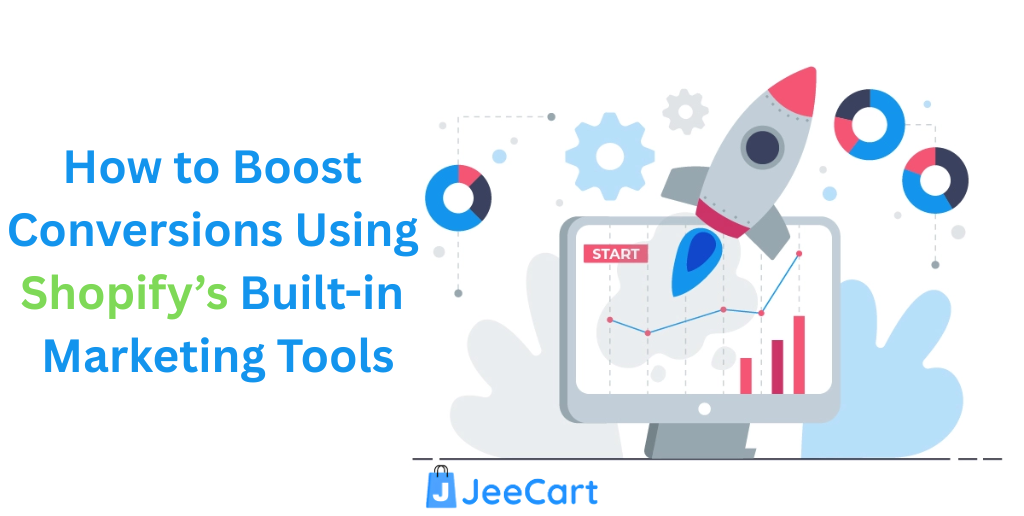
It’s exciting to run an online store on Shopify because you have complete control over your brand, your customers, and your growth. However, practically every Shopify seller faces the same challenge: they struggle to attract visitors who are willing to make a purchase. You can have a lot of visitors, but if they don’t make a purchase, you’re not actually getting any results. The best Shopify stores lean on Ecommerce Video Ads to boost clarity and confidence. They sell the experience, not just the product.
That’s where Shopify’s built-in marketing tools can really help. Shopify website development services is more than just a place to sell your products. It’s a comprehensive set of tools that will help you market more effectively, communicate more clearly, and generate more sales faster.
1. Start with Shopify Email – Build Customer Relationships
You can send out newsletters, inform people about new products, offer discounts, or remind customers about items they left in their baskets. What’s the best part? You can send personalized emails to different groups of consumers using Shopify Email because it is directly connected to your store data.
For example, you may send emails to first-time shoppers, returning customers, or high-spending customers.
A personalized email that says, “Hey Sarah, the dress you liked is back in stock!” seems a lot more real than a generic blast. These small things help keep customers coming back and encourage them to make a purchase.
2. Automate Follow-ups to Save time
With Shopify’s marketing automation tools, it’s like having a little marketing team working for you all the time. You can set up automatic reminders and thank-you notes instead of sending them by hand.
For example:
- Shopify can automatically send a “Welcome” email with a discount voucher when someone signs up for your newsletter.
- When a customer finishes an order, they can get a thank-you email or a suggestion for a product.
- Shopify can remind people of new arrivals if they haven’t purchased in a while.
These automated journeys help your customers remember your brand and increase their likelihood of returning. Automation helps you stay on track, and being on track is crucial for increasing conversions. Tools like BotSpace extend Shopify automation to WhatsApp and Instagram, sending automated messages that recover abandoned carts and enhance the shopping experience.
Pro tip: Keep your emails concise and polite, with a clear call to action (such as “Shop Now”), and include high-quality images of your products that stand out.
3. Offer Smart Discounts and Promotions
Let’s be honest: everyone likes a good deal. You can easily develop and manage discount codes and promotions right from your Shopify dashboard.
You can give:
- Discounts based on a percentage, like 15% off your first order
- Free shipping on orders over a certain amount
- “Buy one, get one” offers
You can even set up discounts to start and end at specific times, which is ideal for flash sales or events that occur only once a year.
Discounts not only encourage people to make a first-time purchase, but they also make them feel valued. You want to make people feel like they need to act quickly, but you don’t want to hurt your brand. Use terms like “Ends tonight” or “Limited time offer” to get people to act faster.
4. Use Analytics to Understand What’s Working
Shopify provides you with in-depth data and analytics that indicate the effectiveness of your marketing efforts. You don’t have to guess; you can keep a close eye on important numbers, such as conversion rates, sales by channel, and average order value.
If you notice that your mobile conversion rate is lower than your desktop conversion rate, it may indicate that your mobile design needs improvement. You might also try a new description or better pictures if one product page receives a lot of views but not many sales.
Shopify also tells you where your traffic is coming from, such as Google, Instagram, or email. Knowing which channels generate the most sales allows you to allocate your time and resources where they will have the greatest impact.
To sum up, Shopify’s analytics provide the information you need to make informed marketing decisions.
5. Get Free Traffic with Built-in SEO Tools
To increase conversions, you need to encourage people to return to your site. Shopify includes built-in search engine optimization (SEO) tools that help your store show up in Google searches.
You can change the URLs, page titles, and meta descriptions for any product or page. Shopify makes clean site structures and layouts that work well on mobile devices, which search engines appreciate.
Use keywords in your product titles and descriptions in a way that makes sense for better SEO. Instead of just writing “Summer Dress,” consider “Lightweight Floral Summer Dress for Women.”
These minor changes will help your store appear in relevant searches over time, providing you with free, organic visitors. You can also drive more organic reach by using social sharing tools that encourage customers to share your pages on social media. And the more relevant your visitors are, the more likely they are to convert.
6. Run Ads Right from Your Shopify Dashboard
Shopify makes it easy to run advertisements by letting you link your Facebook, Instagram, and Google accounts directly. You can create, run, and track ad campaigns all from your Shopify dashboard.
Shopify’s tools help you with every stage of paid advertising, even if you’re new to it. They allow you to set up audiences and track the performance of your ads.
Retargeting advertising is one of the best things about it. These ads show your products to people who have visited your business but didn’t make a purchase. Retargeting can significantly increase your conversion rate by reminding customers of their past experiences.
Shopify keeps track of which advertising leads to sales, so you can spend your money wisely instead of on campaigns that don’t work. Brands also boost retention through a personalised whatsapp campaign that drives higher response and click-through rates.
Wrapping It Up
You don’t need complex techniques or a multitude of tools to increase sales on Shopify. The platform already has everything you need, including email marketing and automation, SEO, analytics, and recovering abandoned carts.
The most important thing is to use these tools wisely and often. Use Shopify Email to talk to your customers better, set up automations to save time, and keep an eye on analytics to see what really works. If you want to leverage your Shopify store for multichannel selling, use a multichannel Shopify integration app to expand your reach to additional selling platforms.
If you want to go beyond Shopify’s built-in tools and turn your happy customers into a powerful growth channel, try ReferralCandy, a top-rated app for referral, affiliate, and influencer marketing. It helps Shopify merchants reward loyal customers and partners who bring in new sales, all with automated tracking and payouts.
As your store expands, consider sponsored ads and advanced tactics, but always remember that successful marketing begins with exceptional customer experiences.







